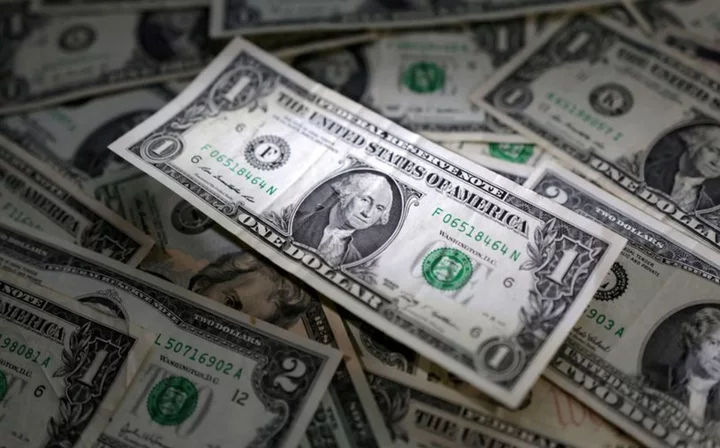By Samuel Indyk
London The U.S. dollar strengthened on Thursday after the Federal Reserve left borrowing costs unchanged but signalled further rate hikes to come as attention turned to the European Central Bank policy announcement later in the day.
The Fed's policy decision snapped a string of 10 consecutive rate hikes, but the projections, or dot plot, showed policymakers expect two more increases by the end of 2023. Powell said rate cuts in 2023 would not be appropriate.
"Fed delivered a hawkish skip," said Mohit Kumar, chief financial economist Europe at Jefferies.
"The revision to the dot plots was more hawkish than our expectations as we had expected an upgrade to reflect one more possible hike."
The dollar index, which measures the currency against a basket of currencies, rose 0.3% to 103.26, recovering from a four-week low of 102.66 on Wednesday.
The market's attention is now turning to other central bank decisions late this week, with the ECB policy announcement on Thursday before the Bank of Japan on Friday.
The euro was last down 0.1% versus the dollar at $1.0819 after touching a four-week high of $1.0865 on Wednesday.
Money market traders are expecting the ECB to raise the deposit rate by 25 basis points, with a further quarter-point hike seen in July.
"Markets will be looking for communication on the balance of risks and whether there's a need for further rate hikes, but we think the potential for big market moves is much smaller than it has been for recent ECB decisions," said Kristoffer Kjær Lomholt, head of FX and corporate research at Danske Bank.
"Our preference is for the US economy to do better than the euro zone ... and hence the dollar looks like a more attractive currency to buy compared to many other currencies, including the euro," Lomholt added.
The Bank of Japan follows on Friday when it is expected to maintain its ultra-dovish stance and yield curve control settings.
"We don't expect changes to yield curve control at tomorrow's meeting, but we think we are getting closer to that policy shift," Danske Bank's Lomholt said.
The yen plunged 1% to 141.50 per dollar, a level not seen since Nov. 23 last year, with analysts on the lookout for further signs of currency intervention.
"Dollar-yen is at year highs and markets are increasingly beginning to talk about whether a further rise could trigger the BoJ to verbally and also effectually intervene in the FX market," Lomholt added.
Japan's top government spokesperson said on Thursday that volatile currency market moves were undesirable and the authorities would take "appropriate" action as needed.
The kiwi dollar sank 0.5% to $0.6177 after data showed New Zealand's economy slipped into a technical recession in the first quarter, putting further rate hikes in doubt.
China's offshore yuan touched 7.1916 per dollar, the weakest since November, after the People's Bank of China (PBOC) cut the borrowing cost of its medium-term policy loans for the first time in 10 months. It was last at 7.1595 per dollar.
That followed a reduction in the PBOC's short-term policy lending rate on Tuesday and analysts widely expect a cut in the country's benchmark rates next week.
"Following the rate cut from earlier this week, there's a lot of expectation for more wide-ranging stimulus to shore up the economy," said Bank of Singapore currency strategist Sim Moh Siong.
(Reporting by Samuel Indyk, additional reporting by Rocky Swift; Editing by Edmund Klamann and Sohini Goswami)

